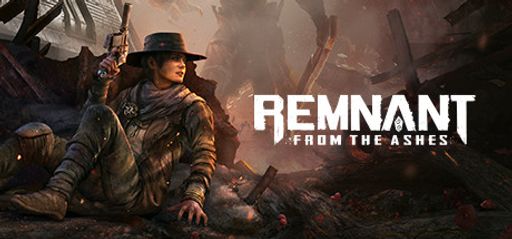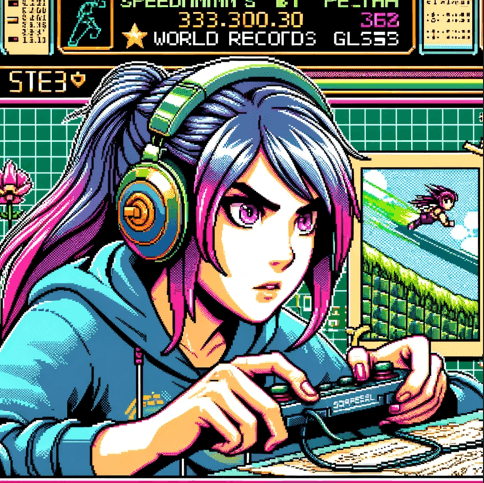 Hey everyone, let’s dive right in! Remnant: From the Ashes, developed by Gunfire Games and published by Arc Games, has been a wild ride for me. From a speedrunner’s perspective, I love how the dynamic procedural maps allow for variability. They keep my runs fresh and challenge me to optimize every route. It’s amazing to see user reviews rave about that cool blend of Dark Souls combat style with shooter intensity. Sure, some critiques point out moments when the controls feel a bit loose in hectic fights. I see this as an opportunity for dedicated players to experiment and refine their strategies.
Hey everyone, let’s dive right in! Remnant: From the Ashes, developed by Gunfire Games and published by Arc Games, has been a wild ride for me. From a speedrunner’s perspective, I love how the dynamic procedural maps allow for variability. They keep my runs fresh and challenge me to optimize every route. It’s amazing to see user reviews rave about that cool blend of Dark Souls combat style with shooter intensity. Sure, some critiques point out moments when the controls feel a bit loose in hectic fights. I see this as an opportunity for dedicated players to experiment and refine their strategies.
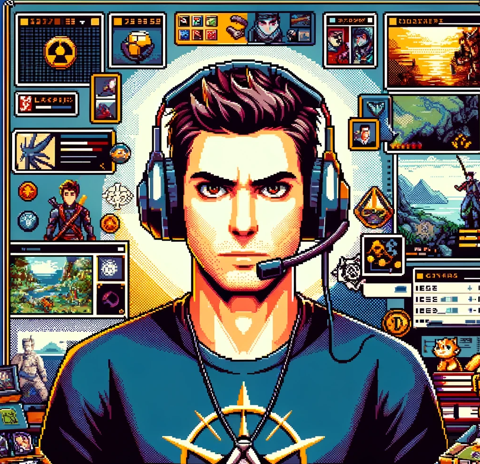 Absolutely, SpeedyGamer99. Remnant: From the Ashes truly offers a comprehensive experience. Every playthrough in these dynamically-generated worlds can hide side quests, collectibles, and secret areas. There is always another detail for us to explore. I have been busy ticking off achievements while combing every nook and cranny of the maps. Gunfire Games did a stellar job layering surprises. Even if some combat encounters aren’t as intricate as a full Dark Souls challenge, these minor issues add to the long-term exploration fun. They push us to keep searching and revisiting areas we might have missed.
Absolutely, SpeedyGamer99. Remnant: From the Ashes truly offers a comprehensive experience. Every playthrough in these dynamically-generated worlds can hide side quests, collectibles, and secret areas. There is always another detail for us to explore. I have been busy ticking off achievements while combing every nook and cranny of the maps. Gunfire Games did a stellar job layering surprises. Even if some combat encounters aren’t as intricate as a full Dark Souls challenge, these minor issues add to the long-term exploration fun. They push us to keep searching and revisiting areas we might have missed.
 You both hit the nail on the head! For someone who loves open-world environments, the blend of survival action and RPG elements in Remnant stands out to me. The game’s co-op mode lets you team up with up to two other survivors, making every expedition feel like an epic adventure. I appreciate how Gunfire Games took inspiration from titles like Diablo and The Division. The result is a mix that feels fresh yet familiar. While some players mention that the overall challenge can spike unexpectedly, that is what keeps the adrenaline pumping during exploration. I love uncovering secrets that push me to think creatively during combat.
You both hit the nail on the head! For someone who loves open-world environments, the blend of survival action and RPG elements in Remnant stands out to me. The game’s co-op mode lets you team up with up to two other survivors, making every expedition feel like an epic adventure. I appreciate how Gunfire Games took inspiration from titles like Diablo and The Division. The result is a mix that feels fresh yet familiar. While some players mention that the overall challenge can spike unexpectedly, that is what keeps the adrenaline pumping during exploration. I love uncovering secrets that push me to think creatively during combat.
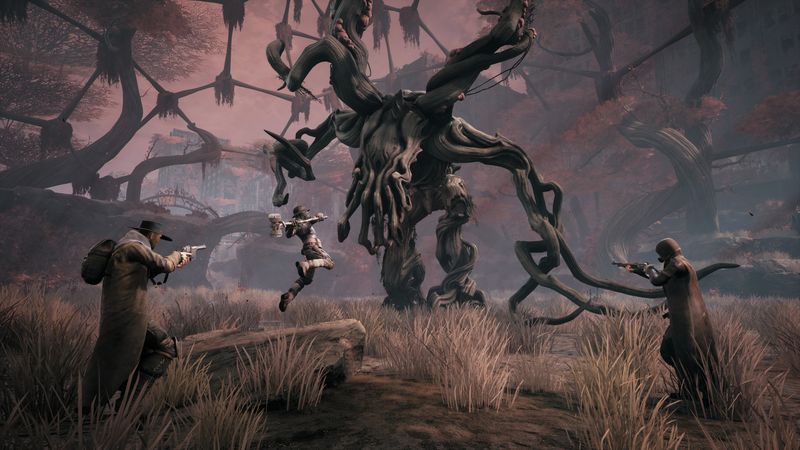
 I agree, NewGamer. Remnant’s combat mechanics are a deep dive into strategic gameplay. The integration of RPG elements with precise shooting and timing challenges me to master each weapon and upgrade system meticulously. I have been experimenting with different loadouts and modifications to suit specific boss fights. This detailed approach mirrors that seen in competitive titles. Though the complexity might be daunting for newcomers, I see it as a canvas for competitive players to perfect their builds and strategies, especially when facing Dark Souls-inspired boss gauntlets.
I agree, NewGamer. Remnant’s combat mechanics are a deep dive into strategic gameplay. The integration of RPG elements with precise shooting and timing challenges me to master each weapon and upgrade system meticulously. I have been experimenting with different loadouts and modifications to suit specific boss fights. This detailed approach mirrors that seen in competitive titles. Though the complexity might be daunting for newcomers, I see it as a canvas for competitive players to perfect their builds and strategies, especially when facing Dark Souls-inspired boss gauntlets.
 Speaking of mechanics, one thing that caught my attention is how environmental interactivity adds layers to both speedrunning and boss fights. Creative item usage, like leveraging upgrades to traverse gaps or dodge sweeping attacks, gives a neat twist to classic shooter gameplay. It reminds me of older level design techniques but with modern twists. These innovations keep the game from feeling stale even after multiple runs.
Speaking of mechanics, one thing that caught my attention is how environmental interactivity adds layers to both speedrunning and boss fights. Creative item usage, like leveraging upgrades to traverse gaps or dodge sweeping attacks, gives a neat twist to classic shooter gameplay. It reminds me of older level design techniques but with modern twists. These innovations keep the game from feeling stale even after multiple runs.
 And let’s not forget the story and narrative aspects! The lore is deep and ties into portals, alternate realities, and humanity’s fight for survival. Gunfire Games blends myth with modern survival tactics. The narrative is pieced together through environmental storytelling, lore collectible logs, and dialogue snippets. It is like an invitation to play detective. While the pacing can fluctuate between co-op sessions and solo games, it only adds layers to the mystery for players who crave every narrative detail.
And let’s not forget the story and narrative aspects! The lore is deep and ties into portals, alternate realities, and humanity’s fight for survival. Gunfire Games blends myth with modern survival tactics. The narrative is pieced together through environmental storytelling, lore collectible logs, and dialogue snippets. It is like an invitation to play detective. While the pacing can fluctuate between co-op sessions and solo games, it only adds layers to the mystery for players who crave every narrative detail.
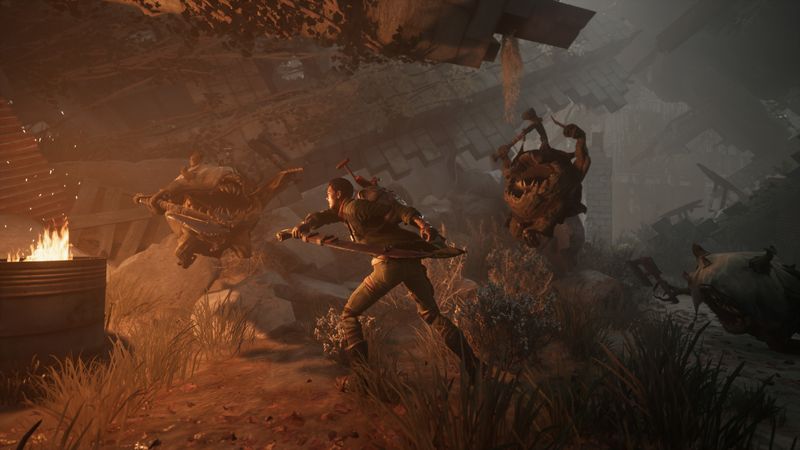
 That’s so true! The narrative hooks me with its rich, immersive world-building. Every portal and new realm sets the stage for the next big revelation—a fusion of chaos and hope. I have read interviews where the developers said they wanted players to feel both the thrill of exploration and the weight of humanity’s struggle. This depth in storytelling helps me connect with the characters and the challenges they face.
That’s so true! The narrative hooks me with its rich, immersive world-building. Every portal and new realm sets the stage for the next big revelation—a fusion of chaos and hope. I have read interviews where the developers said they wanted players to feel both the thrill of exploration and the weight of humanity’s struggle. This depth in storytelling helps me connect with the characters and the challenges they face.
 On the visual side, Remnant’s art direction creates an eerie yet captivating atmosphere. The use of somber palettes, sharp contrasts, and detailed textures pulls you into a post-apocalyptic gloom. Gunfire Games has done an amazing job. It reminds me how studios like Remedy use visuals to elevate narrative. Even in intense multiplayer sessions, the art style complements combat scenarios perfectly. Some platforms may show minor performance hitches during all-out battles, but the overall visual impact is strong.
On the visual side, Remnant’s art direction creates an eerie yet captivating atmosphere. The use of somber palettes, sharp contrasts, and detailed textures pulls you into a post-apocalyptic gloom. Gunfire Games has done an amazing job. It reminds me how studios like Remedy use visuals to elevate narrative. Even in intense multiplayer sessions, the art style complements combat scenarios perfectly. Some platforms may show minor performance hitches during all-out battles, but the overall visual impact is strong.
 The sound design also deserves a shout-out. When you are racing through levels, every echo, enemy growl, and boss musical cue makes a huge difference. The soundtrack intensifies the urgency of my runs. I have noticed that specific tracks during boss fights give an extra adrenaline kick. Even if the voice acting sometimes flirts with generic lines, the overall audio experience ties nicely with the visuals and gameplay.
The sound design also deserves a shout-out. When you are racing through levels, every echo, enemy growl, and boss musical cue makes a huge difference. The soundtrack intensifies the urgency of my runs. I have noticed that specific tracks during boss fights give an extra adrenaline kick. Even if the voice acting sometimes flirts with generic lines, the overall audio experience ties nicely with the visuals and gameplay.
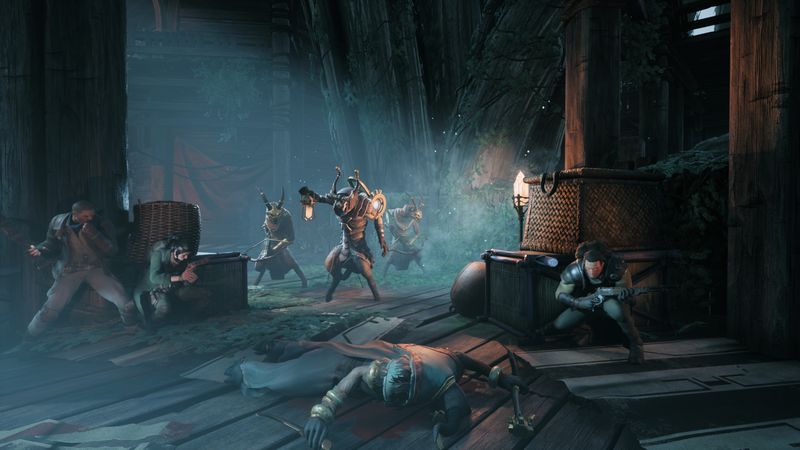
 Absolutely. And speaking of audio, the sound effects enhance the feel of combat and exploration. Each environmental cue signals a potential threat or hints at hidden secrets. This clever integration of sound and gameplay makes every discovery feel earned. It reinforces the game’s overall meticulous design.
Absolutely. And speaking of audio, the sound effects enhance the feel of combat and exploration. Each environmental cue signals a potential threat or hints at hidden secrets. This clever integration of sound and gameplay makes every discovery feel earned. It reinforces the game’s overall meticulous design.
 On to characters—the players are not just fighting monsters; they are stepping into a narrative of resilience. The character backstories are subtle but poignant. I appreciate the diversity in design, even if the focus is more on communal survival than deep individual arcs. This speaks to the idea of strength in numbers. It fits perfectly with the co-op emphasis from Gunfire Games. Every player’s contribution feels significant.
On to characters—the players are not just fighting monsters; they are stepping into a narrative of resilience. The character backstories are subtle but poignant. I appreciate the diversity in design, even if the focus is more on communal survival than deep individual arcs. This speaks to the idea of strength in numbers. It fits perfectly with the co-op emphasis from Gunfire Games. Every player’s contribution feels significant.
 The challenge level in Remnant is another highlight. You have a fine balance of intense combat, clever exploration puzzles, and unexpected battle scenarios that push you to adapt. Some difficulty spikes are well-placed, keeping the gameplay exciting without overwhelming you. Even seasoned gamers can appreciate this balance. For those who need a breather, various builds and weapon choices allow for more accessible play. Both newbies and veterans can find joy in the challenge.
The challenge level in Remnant is another highlight. You have a fine balance of intense combat, clever exploration puzzles, and unexpected battle scenarios that push you to adapt. Some difficulty spikes are well-placed, keeping the gameplay exciting without overwhelming you. Even seasoned gamers can appreciate this balance. For those who need a breather, various builds and weapon choices allow for more accessible play. Both newbies and veterans can find joy in the challenge.
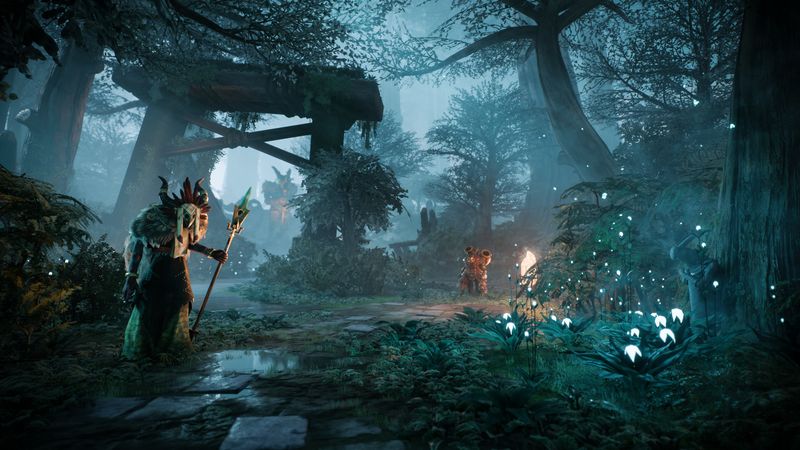
 And with all these layers of complexity, the game boasts impressive replay value. Whether you are chasing multiple endings, uncovering new secrets on each run, or trying to beat your previous speedrun time, Remnant invites repeated playthroughs. The procedural generation ensures that every session feels like a new adventure. This is a big plus for fans who love to master every last detail.
And with all these layers of complexity, the game boasts impressive replay value. Whether you are chasing multiple endings, uncovering new secrets on each run, or trying to beat your previous speedrun time, Remnant invites repeated playthroughs. The procedural generation ensures that every session feels like a new adventure. This is a big plus for fans who love to master every last detail.
 Exactly. With so many unlockable achievements and hidden areas, there is always one more piece of the puzzle to find. It reminds me of classic RPGs where exploring every level and secret really mattered. For those of us who like to delve deeply into the game’s nuts and bolts, this is a treasure trove of content.
Exactly. With so many unlockable achievements and hidden areas, there is always one more piece of the puzzle to find. It reminds me of classic RPGs where exploring every level and secret really mattered. For those of us who like to delve deeply into the game’s nuts and bolts, this is a treasure trove of content.
 To wrap up, Remnant: From the Ashes stands tall in its genre. It marries epic action with deep exploration, innovative mechanics, and a narrative that truly pulls you in. I’d recommend checking out titles like Dark Souls for its punishing yet rewarding boss battles, The Division for modern co-op shooter action, Darksiders for unique art style and apocalyptic flair, Borderlands for its loot-driven experience, and Diablo III for its blend of RPG elements and fast-paced combat. Each of these offers a different angle on what we love about gaming, much like Remnant does in its own way.
To wrap up, Remnant: From the Ashes stands tall in its genre. It marries epic action with deep exploration, innovative mechanics, and a narrative that truly pulls you in. I’d recommend checking out titles like Dark Souls for its punishing yet rewarding boss battles, The Division for modern co-op shooter action, Darksiders for unique art style and apocalyptic flair, Borderlands for its loot-driven experience, and Diablo III for its blend of RPG elements and fast-paced combat. Each of these offers a different angle on what we love about gaming, much like Remnant does in its own way.
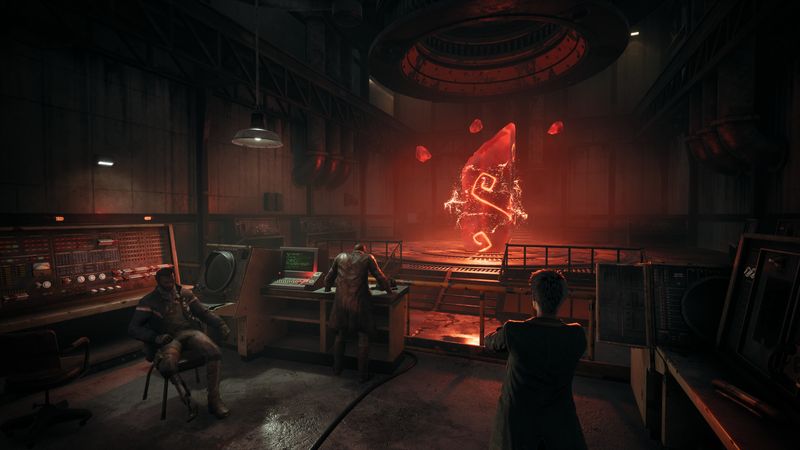
 Well said, everyone. Ultimately, Remnant has carved out its niche with its blend of challenging combat and rich world-building. It offers something for every type of gamer—from speedrunners and completionists to adventure seekers and tactical pros. As a result, exploring its intricacies is a rewarding experience that challenges our skills in every way.
Well said, everyone. Ultimately, Remnant has carved out its niche with its blend of challenging combat and rich world-building. It offers something for every type of gamer—from speedrunners and completionists to adventure seekers and tactical pros. As a result, exploring its intricacies is a rewarding experience that challenges our skills in every way.
 Couldn’t agree more! Remnant: From the Ashes, courtesy of Gunfire Games and Arc Games, is a stellar example of innovative design and diverse gameplay. In conclusion, it’s a wild, ever-changing ride that keeps me coming back for more—and I’m sure it will for all of you as well. So, happy gaming, everyone!
Couldn’t agree more! Remnant: From the Ashes, courtesy of Gunfire Games and Arc Games, is a stellar example of innovative design and diverse gameplay. In conclusion, it’s a wild, ever-changing ride that keeps me coming back for more—and I’m sure it will for all of you as well. So, happy gaming, everyone!

